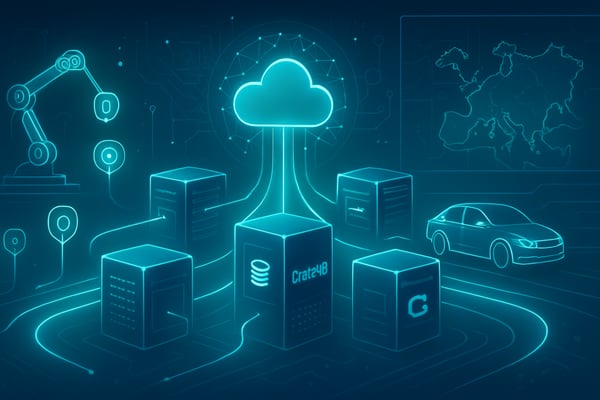Building AI applications can be a challenging task, and one of the biggest challenges is to come up with a good data management strategy. Without a proper data strategy, any results are most likely not trusted. Reliable data in diverse formats and high quality is required across the whole AI lifecycle.
Challenges of data management in AI applications
There are unique requirements for combining structured, semi-structured, unstructured and real-time/streaming data. Unstructured data (text, documents, images, audio, video) remain largely untapped. Moreover, there is a lack of people with the necessary experience. An AI system in production spans many personas and areas of expertise, ranging from data engineering over data science and MLOps up to development for end-user applications.
Today's approach when developing an application usually involves storing data in a relational database system. However, soon you realize that more functionality is required, such as search functionality, which requires adding a search engine into the architecture, along with data replication processes to keep data in sync with the relational database. In addition, introducing an application backend that integrates different data sources is necessary, as the application usually can't speak multiple languages or APIs.
This backend can be code or a data virtualization/data federation technology. More complex operational and monitoring concepts and processes are also needed. You may need additional geospatial features or add complex objects/JSON - so you can add a document database. At some point in time, your relational database does not scale well for your sensor data, so you add a time-series database. Lastly, you need normalized abstractions for machine learning or start working with embeddings to integrate vector store embeddings so a vector store is integrated.
Eventually, you have a very complex architecture with a lot of data replication, different technologies, and multiple different languages in use for each of these technologies. This also puts hurdles to deployment, monitoring, and operations and adds additional development overhead. In summary, your team requires multiple skill sets that take time to be learned in order to develop and optimize as well as operate and scale these systems. Changes take longer and longer as more integration processes are involved. Eventually, it results in high TCO and high costs of change.
The need for a multi-model approach in data management
A database like CrateDB solves these challenges by offering a multi-model approach that can cover tables, time-series, geospatial, documents/JSON, binary objects, and vectors. All of these data are accessible via native SQL by any data consumers, while still offering a dynamic schema that makes the database more resilient and easier to change.
CrateDB’s vector store helps businesses build better AI applications by offering streamlined data management, advanced search capabilities, data enriched with semantics, high scalability, and faster development & lower maintenance. It eliminates the need to manage multiple systems, offers powerful vector search capabilities, and seamlessly integrates with time series, geospatial, JSON, full-text search, and other data types.
The future of vector databases for AI applications is promising. There is a lot of controversial discussions if dedicated vector databases are needed or if we should rely on a unified solution like CrateDB. The need for vector databases, especially for enterprise data, will remain high. Integrations to frameworks like LangChain offer an easy entry point to developing language-based applications – if more advanced functionality is needed, the Python integration of CrateDB allows to seamlessly use SQL where needed.
The promising future of vector databases for AI applications
In conclusion, building AI applications requires a well-thought-out data strategy and multiple skill sets. CrateDB offers a multi-model approach that can cover tables, time-series, geospatial, documents/JSON, binary objects, and vectors, and its vector store provides advanced search capabilities, streamlined data management, high scalability, and faster development & lower maintenance.
The future of vector databases for AI applications is promising, and we can expect to see smaller LLMs coming up that will make it easier to deploy, fine-tune, and query your own data. As AI applications become more complex, it is up to the data management providers to provide easier interfaces that help in the heavy lifting to make language-based applications precise.


